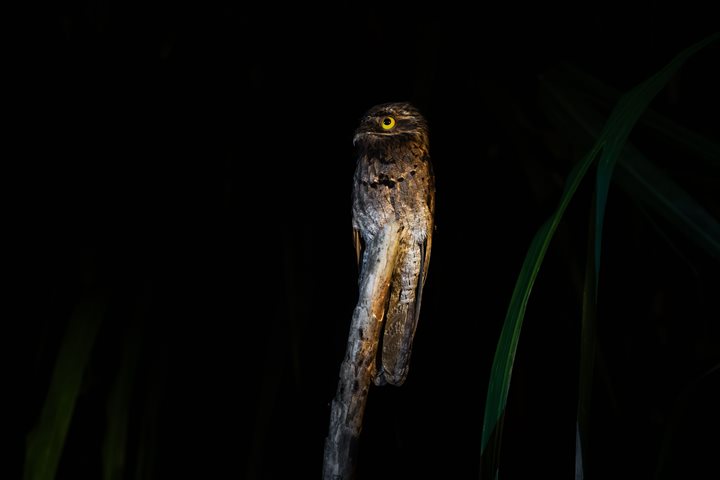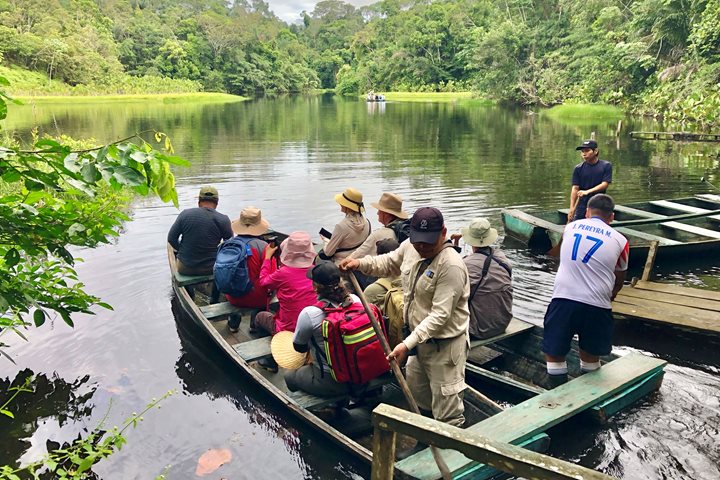We woke up to the sound of birds and the spouts of pink dolphins around the ship. Yarapa is one of the tributaries surrounded by small fishermen settlements in a few areas along the river. We decided that it was best to go on an early pre-breakfast outing to spot a few species of birds and monkeys. A few minutes into the exploration, we encountered a couple monk saki monkeys, which are considered species of “new world monkeys.” Recovering from near extinction, these monkeys are often found in patches of mature forest. They feed on fruit and move along the canopy in small family troops of five to seven individuals. Their presence in a forest patch is an indicator of the health of a specific area. Due to their diets, these monkeys are important seed dispersers.
We explored farther to encounter a family of squirrel monkeys jumping among the canopy and being highly vocal. These omnivorous monkeys have around 20-25 different types of calls registered. They live in interesting social structures from small to large numbers of individuals. Squirrel monkeys live up to twenty-five years.
After breakfast, we landed near a small riverside community known as Amazonas. This small community is a partner in sustainability with Lindblad Expeditions. In a joint venture program, we teach local women about leadership and empowerment, running long-term projects like fish farms through local organizations, such as “Minga Peru.” Amazonas community welcomed us with an incredible display on producing sugarcane juice, a presentation on local community projects, and a colorful display of handmade souvenirs.
During our afternoon exploration, we put on our rubber boots to explore a non-flooded forest trail known as Casual. This exploration site offered the opportunity to encounter an adult green anaconda. Green anacondas are the heaviest of the species and the second longest. Their bodies our adapted to an aquatic lifestyle, so their eyes and nostrils are on top of their heads and their patterns are camouflaged in the water’s vegetation. We found one of the small reptiles in a small rainwater pond.
We were extremely lucky to find a couple of poison dart frogs, which were red and blue. We also found a monkey frog that was well-camouflaged in the green foliage. This species of poison dart frog (Dendrobates reticulata) is native to tropical Central and South America, and it is often seen under dried leaves at ground level here in the Amazon. Farther into the forest, we found one pink-toed tarantula hiding among the buttresses of an old strangler fig. These tarantulas are one of over a thousand arboreal tarantula species. They have the ability to eject hairs from their abdomen, causing irritation to predators. It’s incredible to learn that these tarantulas can live up to ten years!
We finished an incredible trip that we will remember for the rest of our lives! We chose one of the prime locations to visit while here in the heart of the Peruvian Amazon. What a life changing experience!







